
Another divine scale gem from the workbench of Danilo Renzulli. The Kikka (Divine Orange Blossom), Nakajima's lookalike (but smaller) Me 262, officially the Experimental Special Attack Aircraft 'Kikka' (試作物殊攻撃機 '橘花’). This pioneer Japanese turbo-jet was realised from the Naval Air Headquarters Koukoku Heiki (皇国兵器 - 'Empire Weapon' is one translation) No.2 specification of late August 1944 calling for a land based attacker suitable for attacking enemy warships and vessels off the coast of Japan with the capability to carry a single 800 kg (1,760 lb) bomb, although the envisaged normal bomb load was 500 kg. The wings folded just outboard of the engine nacelles to assist concealment on the ground. The aircraft was to be used for suicide attacks and there appears to have been no provision for air to air gunnery armament in the initial design. The designation J9Y1 sometimes attributed to an interceptor version of Kikka was never officially used. With the replacement of the original Hitachi Hatsukaze ('Fresh Wind') and Ne-12 turbo jets by the more promising Ne-20 powerplants it was planned to create two-seat trainer, two-seat reconnaissance and interceptor versions, the latter armed with two 30mm cannon for air defence use against the B-29.
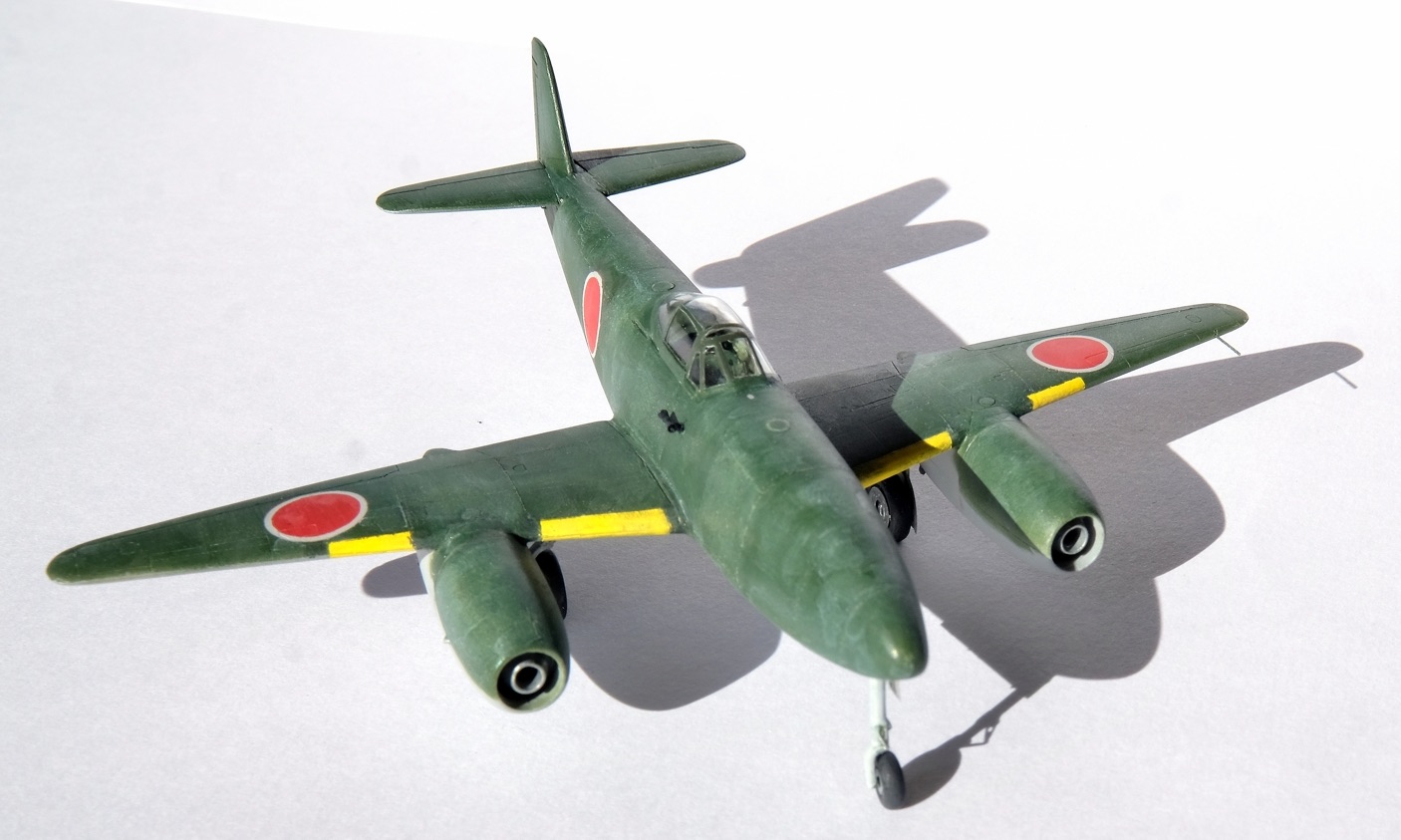
Planning for construction at the Nakajima (at dispersed plants from April 1945), Kyushu Hikoki, Sasebo and 1st Aircraft Arsenals called for 57 aircraft by August 1945 rising to 80 in September 1945. By the end of the war 22 aircraft were still under construction at Nakajima and two more were under construction at the Kyushu Hokoki plant. A single example No.1 was completed by 31 June 1945 and test flown on 7 August 1945. Aircraft Nos.2, 3, 4 and 5 were nearly completed by war's end but lacked landing gear and other fittings. Two fuselages Nos. 6 and 7 were sent to 1st Naval Technical Arsenal in July 1945 for conversion to two-seat trainers. Nos.8 to 10 had completed fuselages, 11 to 16 completed fuselages awaiting assembly with completed wings and 17 to 25 completed fuselages with wings under construction. With that brief background introduction to Kikka, over to Danilo then:-
1/72 MPM Nakajima Kikka
'Bought at the beginning of the 2000s, this kit has been lying for years in my stash with very little work on it over time. Only in February 2024 I decided to finish it, its building process looking not so complicated. The model actually revealed a smooth construction - most probably thanks to the clean lines of the original aircraft - and little putty was needed as can be seen from the images. The photo etch sets included in the kit and from NH Detail (A72-050) supplied several parts to complete the canopy and other external details.
'As is often the case once the two fuselage halves had been joined and the canopy fixed in place, little could be seen of the cockpit interior. I found the canopy surprisingly thin and well moulded despite this being one of the early MPM kits - it was just sanded down and then polished with automotive polish cream. The forward undercarriage wheel well was fabricated with plasticard and the undercarriage leg attachment modified.
'As usual I added a few external details using some brass tube such as the pitot tube, the small device provided under the fuselage tail to prevent damage during take-off, the small exhaust pipes in the engine nacelle sides and the undercarriage retraction arms. The wheel well covers and the undercarriage leg compasses were again from the NH Detail sheet.
'On this model I attempted a new method to highlight fuselage and engine nacelle panels. I masked some panels with tape and sprayed over one or two layers of primer to build up some thickness, then the entire model was primed. To obtain a deeper separation line between the nacelle panels I fixed a piece of fishing line around the nacelle and then sprayed the primer over that as shown in the pictures.
'The two small circular covers on top of the fuselage located before and after the canopy have been obtained with a punch from thin can sheet. Some work was needed to improve the shape and thickness of the jet air intakes and exhausts, and I had to re-shape the rear of the engine nacelle to wing fitting - that being the most critical area of the entire build. A fine venturi tube from SBS was added to the fuselage right side.
'Note that I didn’t install the RATO equipment due to the fact that I could not devise a satisfactory solution to scratch-build the rockets.
'The green/grey livery was a personal mix of paints from Gunze Mr. Color, while the Hinomaru were sprayed on using Maketar masks. Then a light weathering process by dry-brushing was applied to some surfaces plus a layer of matt finish by brush. In the end I can say that I loved the final result and the lines of this tiny early jet era plane. It’s a shame we couldn’t see this aircraft in an operational scheme - just to add some kokutai code…'
With very special thanks to Danilo for sharing these images and build notes.
Two editions of the Kikka kit were released by MPM, the first in 1998 and the second, an 'Updated' kit, in 2002 (MPM became Special Hobby in 2016). Other injection moulded Kikka kits in 1/72 scale have been released by Merlin Models (good luck with that one!), Pegasus (who asserted red brown upper surfaces) and in several different speculative versions by AZ Model, including the historic original, an Otsu air defence fighter, a two-seat trainer and two night fighters, one with oblique armament, but all are sold out at their website and seemingly as rare as hen's teeth elsewhere. There have also been various vacform and resin kits, as well as a popular 1/48 scale injection moulded kit released since 1995 in several editions by Fine Molds.
References: The introduction to Danilo's model was drawn from 'Kikka' by Robert C Mikesh (Monogram Close-Up 19, Monogram Aviation Publications, 1979) and 'General View of Japanese Military Aircraft in the Pacific War' by the Staff of AiReview, (Kantôsha Co.. Ltd. Japan 1956). The latter reference, despite being 'old', is recommended in view of the impressively long list of Japanese aeronautical veterans consulted by the editorial staff. It has a useful English language supplement and is readily available from AbeBooks in a range of editions and prices. The Monogram Close-Up books, focussing mainly on Luftwaffe types, were exceptionally good references, packing a lot of useful data into 32 pages for Kikka.
Image credit: All photos © 2025 Danilo Renzulli




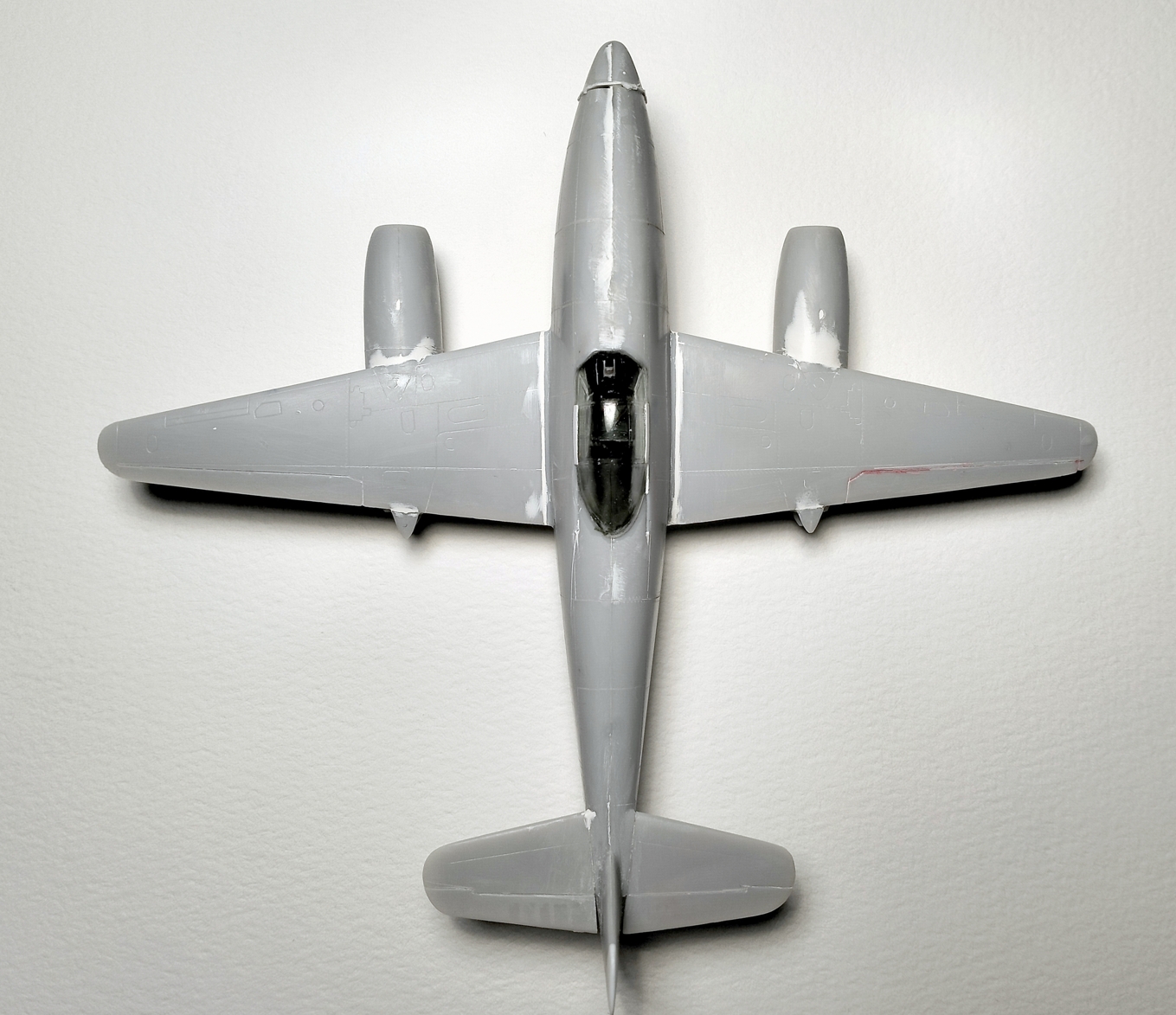

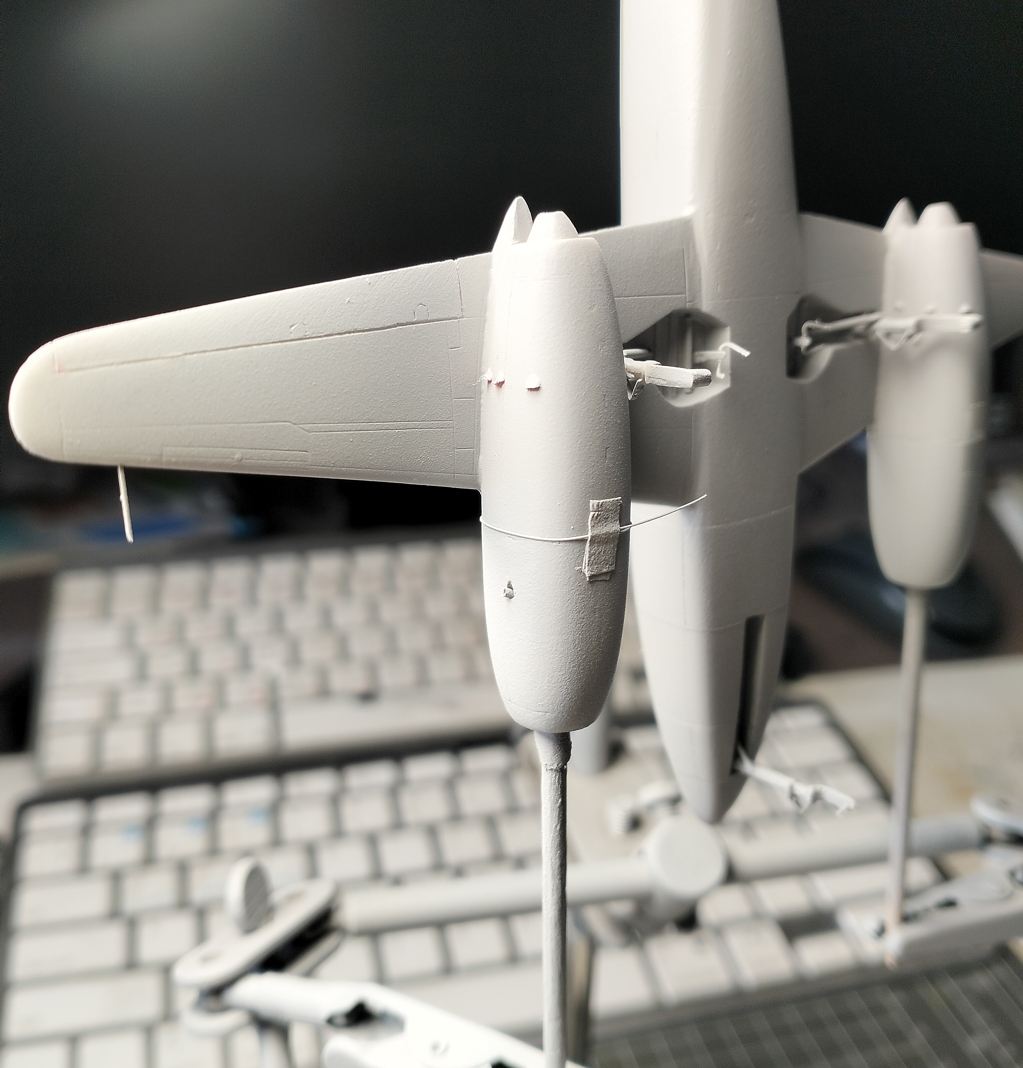



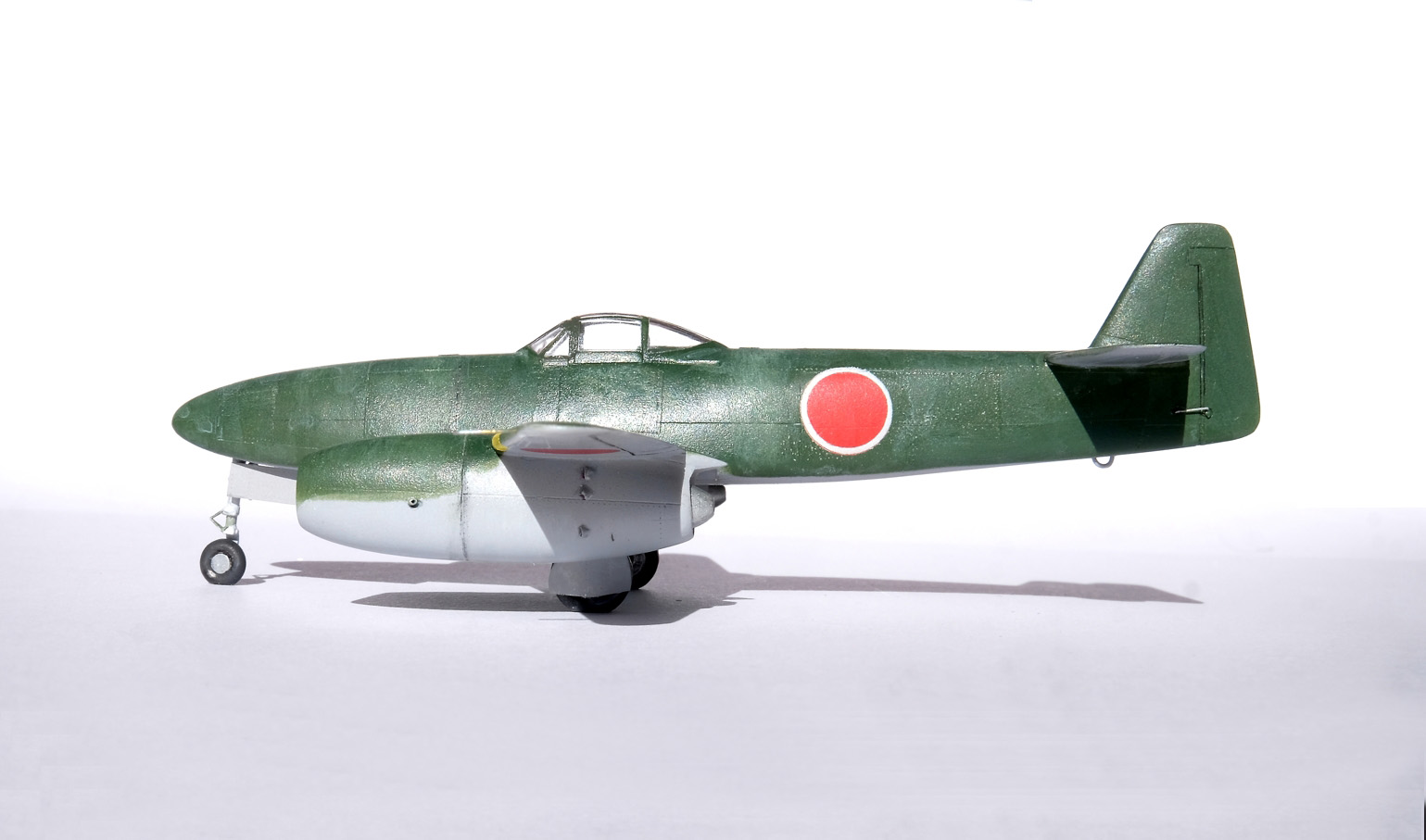


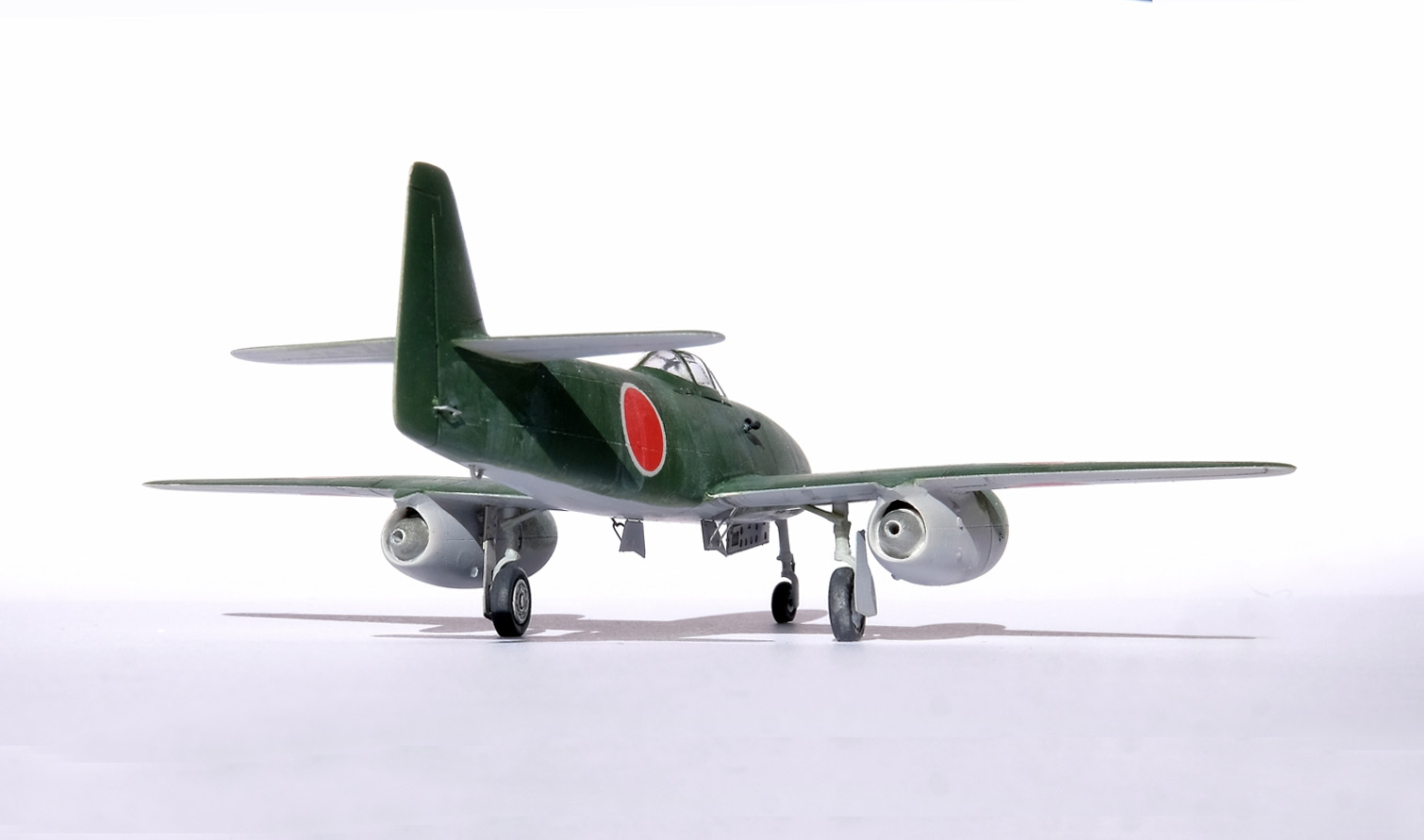
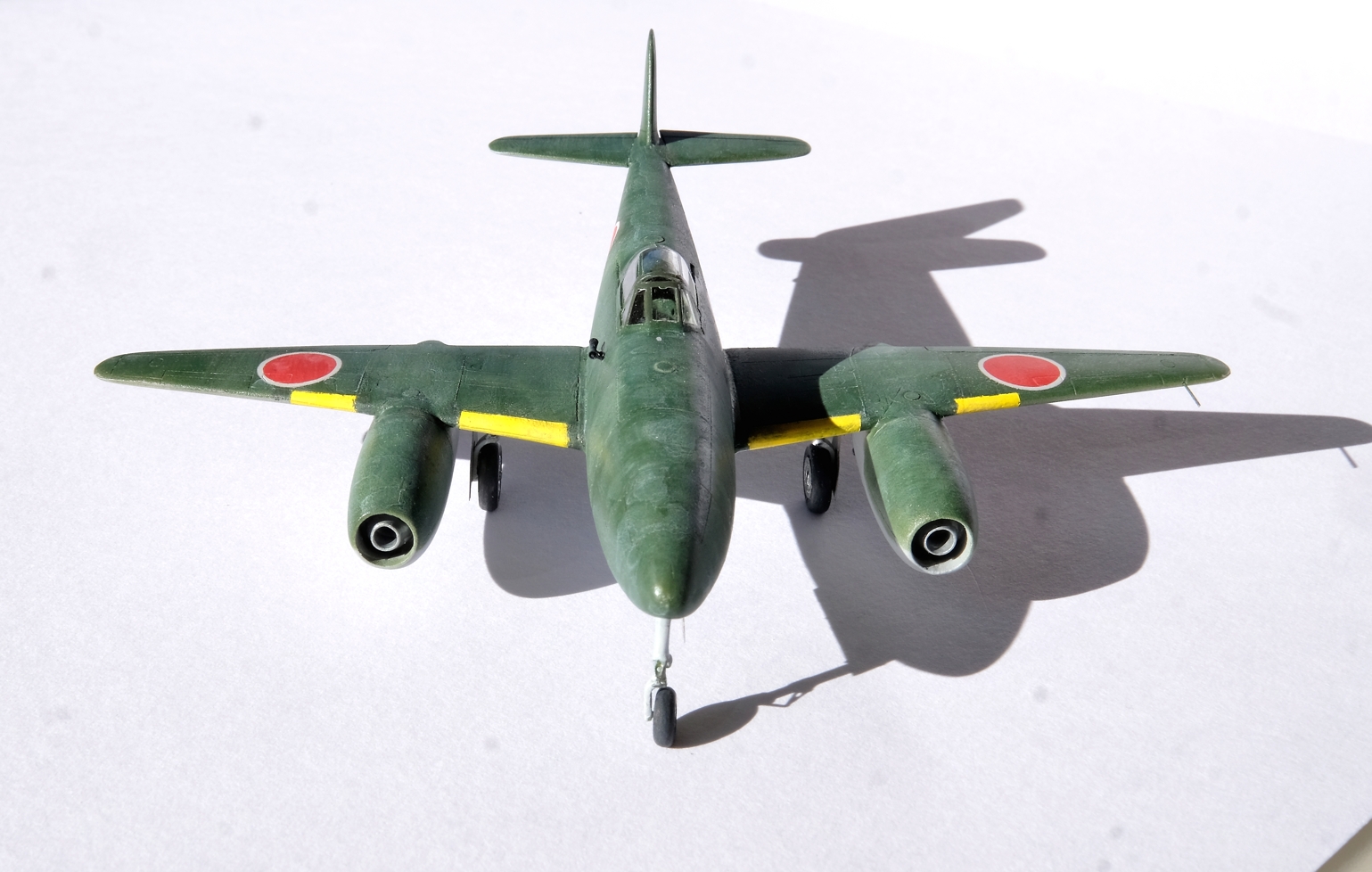

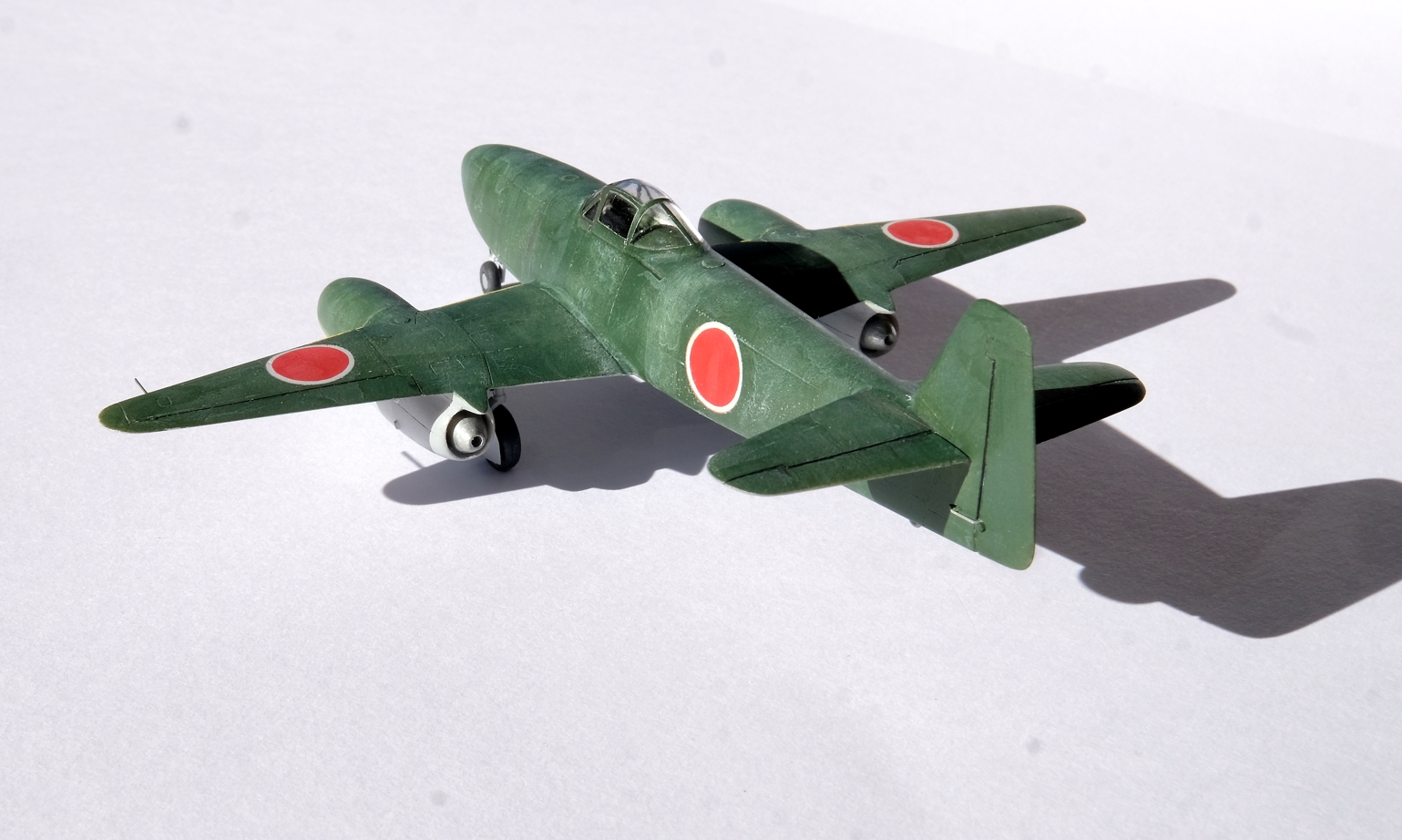
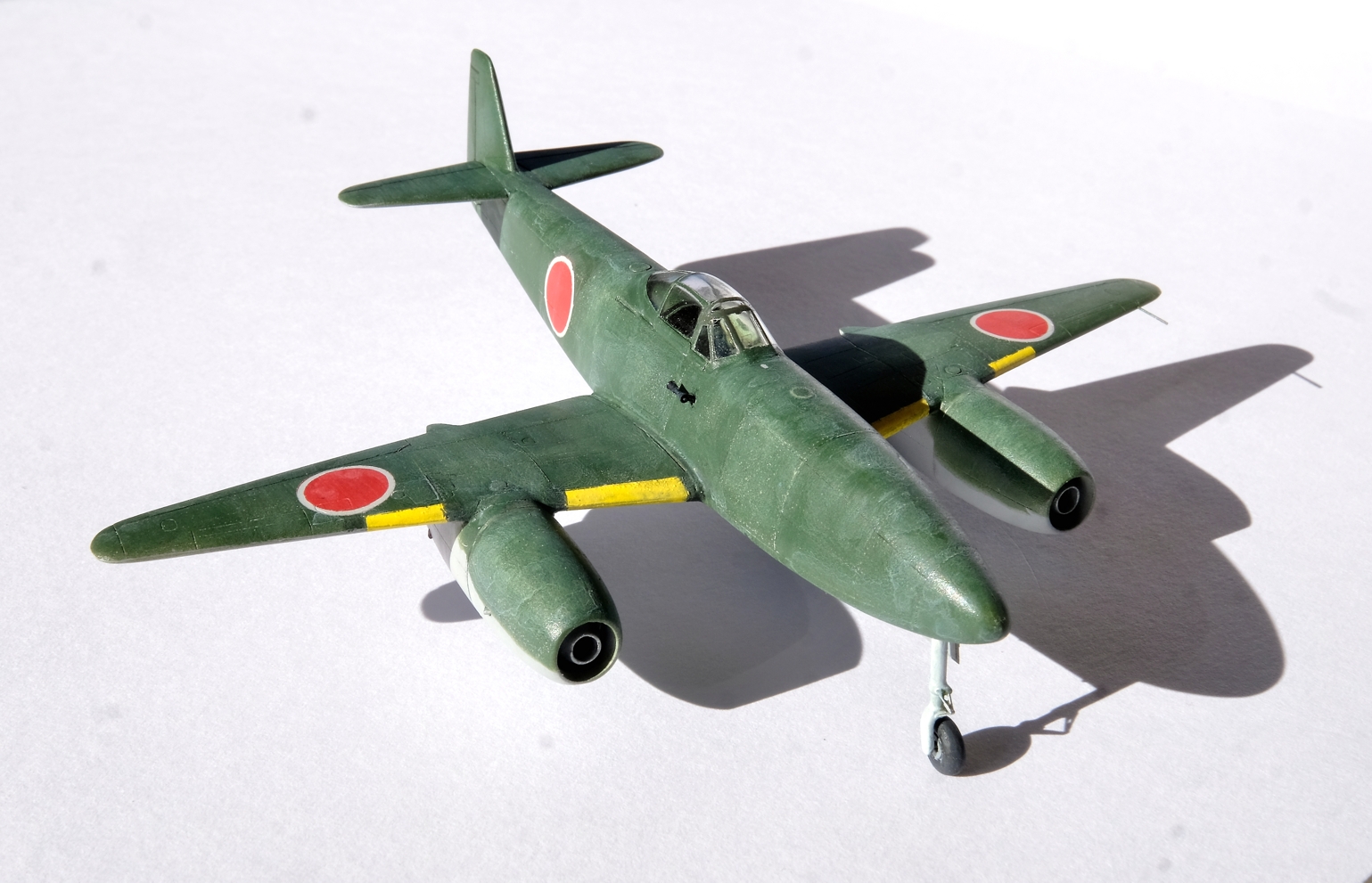






1 comment:
Another fine creation by Danilo. I much admire your cockpit detail work in 1/72.
It's interesting that the Kikka and the IJA's Ki-201followed the general layout of the Me 262 but had a much different size (hence not based on German blueprints). The Japanese versions never really impressed me since they didn't have the 262's sleek looks and purposeful 'sit'. Nevertheless they are an important step in fighter design and therefore attractive for AoJ modellers.
Thanks for posting and referencing this rare aircraft, Nick.
Post a Comment